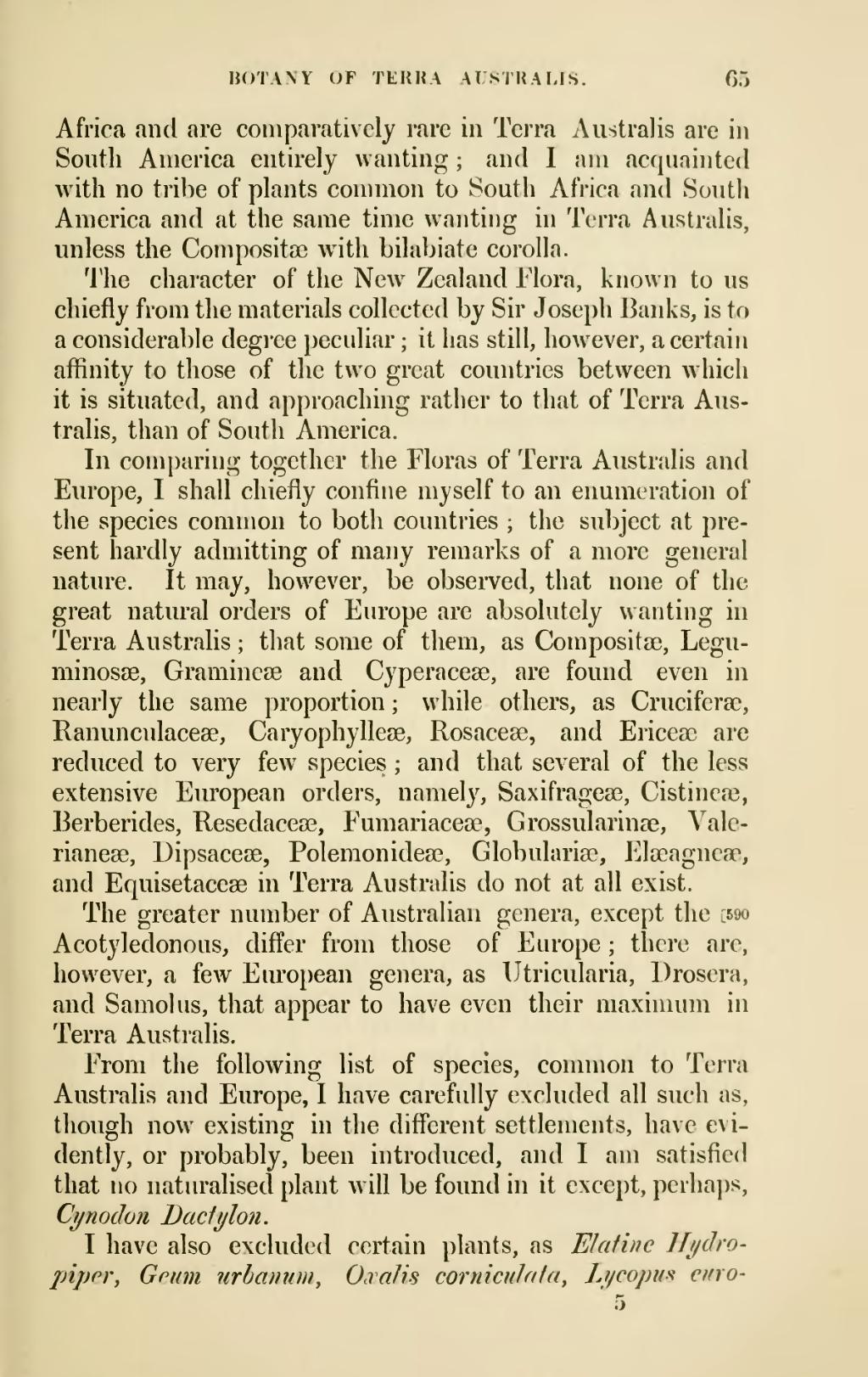Africa and are comparatively rare in Terra Australis are in South America entirely wanting; and I am acquainted with no tribe of plants common to South Africa and South America and at the same time wanting in Terra Australis, unless the Compositæ with bilabiate corolla.
The character of the New Zealand Flora, known to us chiefly from the materials collected by Sir Joseph Banks, is to a considerable degree peculiar; it has still, however, a certain affinity to those of the two great countries between which it is situated, and approaching rather to that of Terra Australis, than of South America.
In comparing together the Floras of Terra Australis and Europe, I shall chiefly confine myself to an enumeration of the species common to both countries; the subject at present hardly admitting of many remarks of a more general nature. It may, however, be observed, that none of the great natural orders of Europe are absolutely wanting in Terra Australis; that some of them, as Compositæ, Leguminosæ, Gramineæ and Cyperaceæ, are found even in nearly the same proportion; while others, as Cruciferæ, Ranunculaceæ, Caryophylleæ, Rosaceæ, and Ericeæ are reduced to very few species; and that several of the less extensive European orders, namely, Saxifrageæ, Cistineæ, Berberides, Resedaceæ, Fumariaceæ, Grossularinæ, Valerianeæ, Dipsaceæ, Polemonideæ, Globulariæ, Elæagneæ, and Equisetaceæ in Terra Australis do not at all exist.
The greater number of Australian genera, except the [590 Acotyledonous, differ from those of Europe; there are, however, a few European genera, as Utricularia, Drosera, and Samolus, that appear to have even their maximum in Terra Australis.
From the following list of species, common to Terra Australis and Europe, I have carefully excluded all such as, though now existing in the different settlements, have evidently, or probably, been introduced, and I am satisfied that no naturalised plant will be found in it except, perhaps, Cynodon Dactylon.
I have also excluded certain plants, as Elatine Hydropiper, Geum urbanum, Oxalis corniculata, Lycopus euro-
